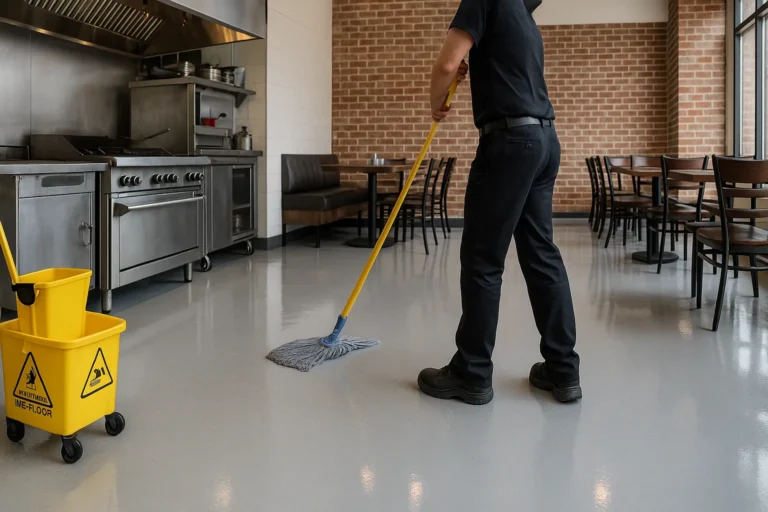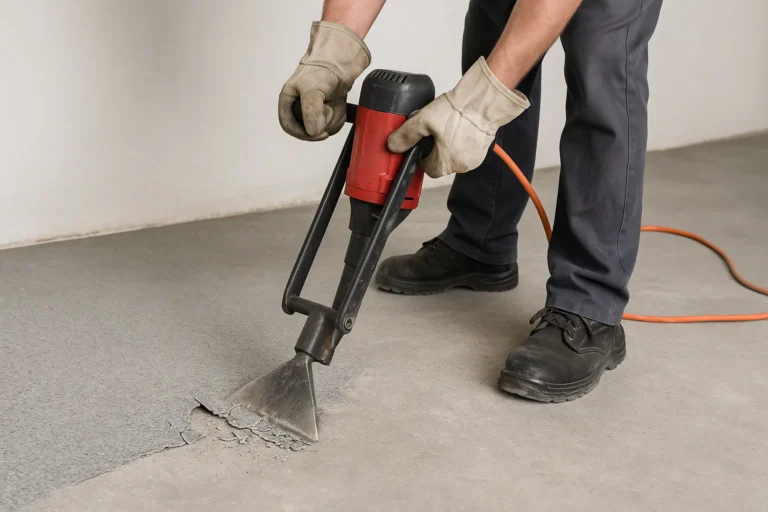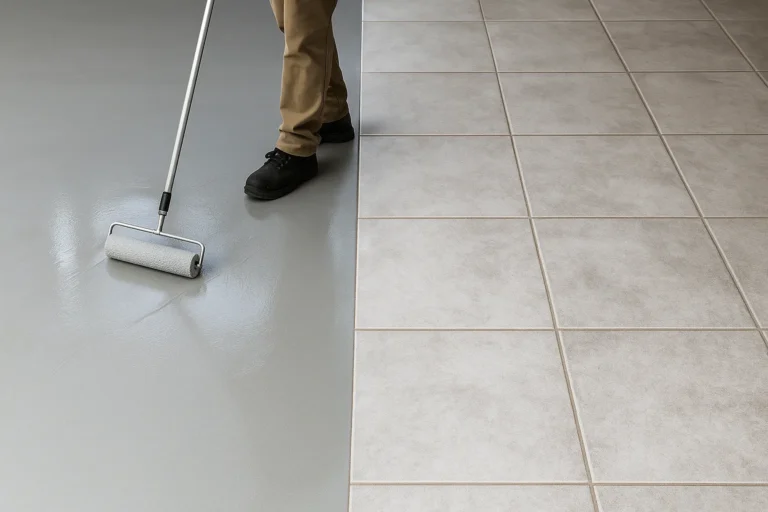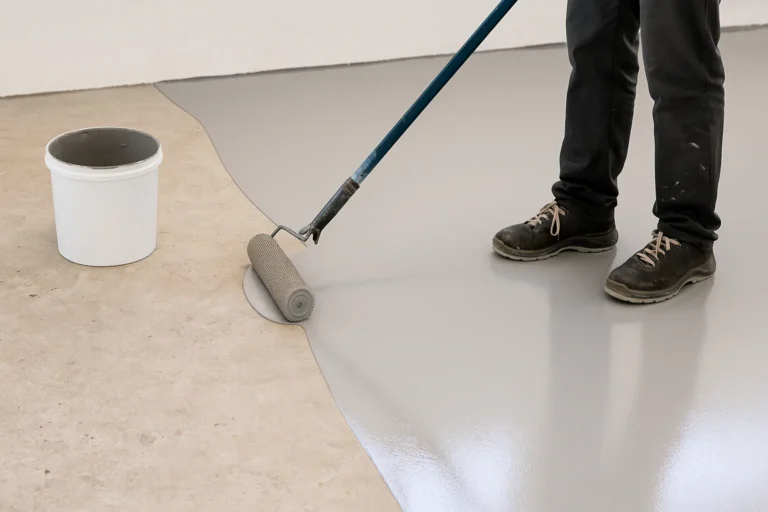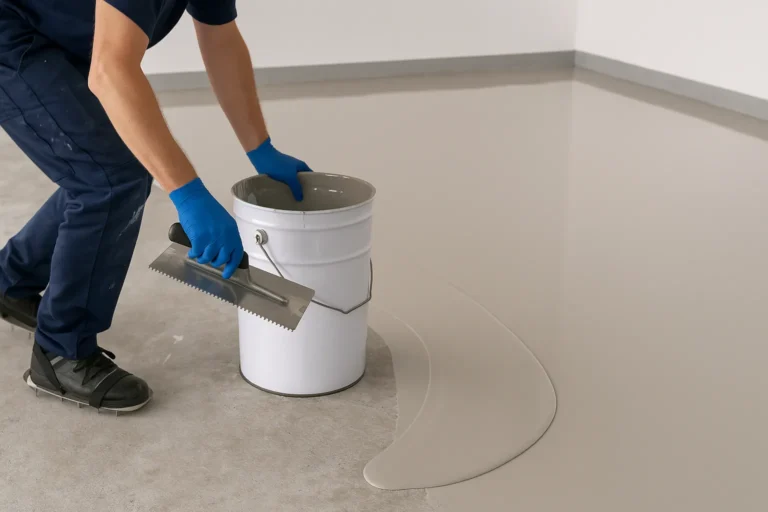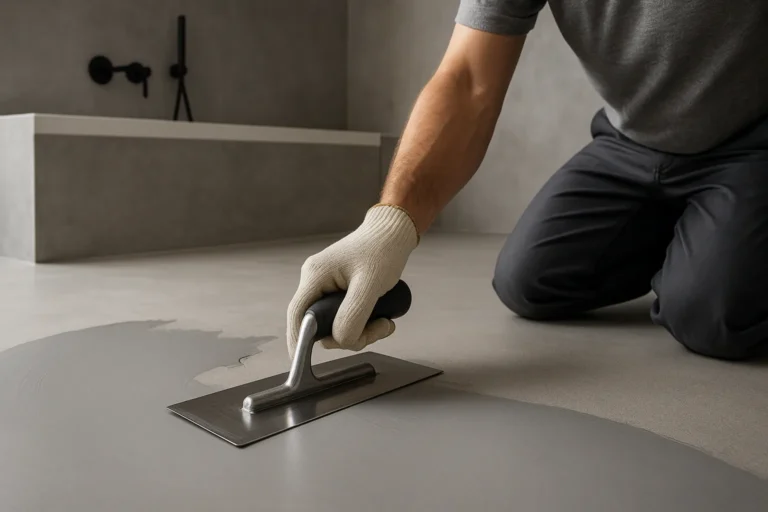Innovative Decorative Concrete Applications for Cultural Venues
Stamped concrete patterns for museum courtyards
Museum courtyards serve as the first impression for visitors, setting the tone for their cultural experience. Stamped concrete patterns offer a versatile and cost-effective solution to create visually stunning outdoor spaces. These patterns can mimic natural materials like stone, brick, or tile, allowing museums to achieve a high-end look without the associated maintenance costs.
Duraamen’s stamped concrete solutions provide durability and aesthetic appeal, making them ideal for high-traffic areas in cultural venues. The wide range of patterns and colors available allows designers to create unique, thematic designs that complement the museum’s architecture and exhibits.
- Popular stamped concrete patterns for museum courtyards:
- Cobblestone
- Slate
- Herringbone brick
- Ashlar cut stone
- Textured wood planks
Polished concrete flooring for indoor galleries
Polished concrete flooring has become increasingly popular in indoor gallery spaces due to its sleek, modern appearance and practical benefits. This flooring option reflects light, enhancing the visibility of artwork and creating a bright, open atmosphere. Its durability and low maintenance requirements make it an excellent choice for high-traffic areas in museums.
Duraamen’s polished concrete systems offer various levels of sheen and aggregate exposure, allowing designers to customize the look to suit the gallery’s aesthetic. The seamless nature of polished concrete also provides a neutral backdrop that doesn’t compete with the exhibited artworks.
Benefits of polished concrete for indoor galleries:
- Improved light reflectivity
- Easy to clean and maintain
- Resistant to stains and spills
- Long-lasting durability
- Environmentally friendly option
Exposed aggregate finishes for outdoor walkways
Exposed aggregate finishes provide a textured, slip-resistant surface ideal for outdoor walkways in cultural venues. This decorative concrete technique involves removing the top layer of cement paste to reveal the underlying aggregate, creating a unique and visually interesting surface.
Duraamen’s exposed aggregate systems offer a wide range of aggregate options, including natural river rocks, recycled glass, and colored stones. This versatility allows designers to create pathways that complement the museum’s architecture and landscape while providing a safe and durable surface for visitors.
Table: Comparison of Exposed Aggregate Finishes
|
Aggregate Type |
Appearance |
Slip Resistance |
Durability |
|
River Rocks |
Natural |
High |
Excellent |
|
Recycled Glass |
Modern |
Medium |
Very Good |
|
Colored Stones |
Vibrant |
High |
Excellent |
Designing Engaging Museum Courtyards
Incorporating water features and sculptures
Water features and sculptures can transform museum courtyards into captivating outdoor spaces that engage visitors and create a sense of tranquility. These elements serve as focal points, encouraging exploration and providing opportunities for reflection and interaction.
Designers can integrate decorative concrete elements with water features, such as textured walls for waterfalls or polished concrete basins for reflecting pools. Sculptures can be mounted on decorative concrete pedestals or incorporated into the landscape design, creating a seamless blend of art and architecture.
- Ideas for integrating water features and sculptures in museum courtyards:
- Interactive fountains with programmable water jets
- Sculptural water walls with LED lighting
- Reflecting pools surrounding iconic sculptures
- Concrete seating areas overlooking water features
- Textured concrete pathways leading to sculpture gardens
Creating multi-functional spaces for events
Museum courtyards can serve as versatile venues for a variety of events, from outdoor exhibitions to fundraising galas. Designing these spaces with flexibility in mind allows cultural institutions to maximize their potential and generate additional revenue.
Decorative concrete plays a crucial role in creating multi-functional spaces. Stamped or stained concrete can define different areas within the courtyard, such as performance stages, seating areas, or exhibition zones. Durable concrete surfaces can withstand heavy foot traffic and the weight of temporary structures, making them ideal for event spaces.
Key considerations for multi-functional courtyard design:
- Adequate electrical and lighting infrastructure
- Flexible seating options (built-in and movable)
- Weather-resistant flooring materials
- Integrated audio-visual capabilities
- Adaptable shade structures
Integrating seating areas and landscaping
Thoughtful integration of seating areas and landscaping in museum courtyards creates inviting spaces for visitors to relax, socialize, and reflect on their cultural experiences. Decorative concrete can be used to create unique seating options that complement the overall design aesthetic.
Concrete planters and retaining walls can be incorporated into the landscape design, providing structure and defining different zones within the courtyard. These elements can be finished with various decorative concrete techniques to enhance their visual appeal and tie them into the overall design scheme.
- Innovative seating and landscaping ideas for museum courtyards:
- Curved concrete benches with integrated lighting
- Tiered seating areas with built-in planters
- Concrete “floating” platforms over water features
- Textured concrete walls doubling as vertical gardens
- Sculptural concrete seating elements that double as art installations
Outdoor Exhibition Spaces Trends and Best Practices
Weather-resistant materials for art installations
Outdoor exhibition spaces require durable, weather-resistant materials to protect artworks from the elements. Decorative concrete offers a range of solutions that combine aesthetics with practicality, making it an excellent choice for outdoor art installations.
Duraamen’s concrete coatings and sealers provide protection against UV rays, moisture, and temperature fluctuations, ensuring that outdoor exhibits maintain their appearance and structural integrity over time. These coatings can be customized to achieve various finishes, from matte to high-gloss, allowing for creative expression in the presentation of artworks.
Weather-resistant materials for outdoor art installations:
- UV-resistant concrete sealers
- Epoxy coatings with color stability
- Textured concrete surfaces for improved grip
- Moisture-resistant concrete admixtures
- Anti-graffiti coatings for easy maintenance
Lighting design for nighttime displays
Effective lighting design is crucial for outdoor exhibition spaces, particularly for nighttime displays. Proper illumination enhances the visibility of artworks, creates ambiance, and extends the usability of outdoor spaces beyond daylight hours.
Decorative concrete can be integrated with lighting elements to create stunning visual effects. For example, glow-in-the-dark aggregates can be incorporated into concrete surfaces, or LED strips can be embedded in concrete pathways to guide visitors through nighttime exhibitions.
- Innovative lighting solutions for outdoor exhibition spaces:
- Solar-powered concrete pavers with built-in LEDs
- Illuminated concrete benches and seating areas
- Projection mapping on textured concrete surfaces
- Fiber optic lighting integrated into concrete flooring
- Motion-activated lighting for interactive displays
Interactive elements for visitor engagement
Interactive elements in outdoor exhibition spaces encourage visitor engagement and create memorable experiences. Decorative concrete can be used to create durable, weather-resistant interactive installations that withstand frequent use and exposure to the elements.
Designers can incorporate touchscreens, sensors, or other interactive technologies into concrete structures, creating immersive experiences that blend art, technology, and architecture. These interactive elements can provide additional information about exhibits, allow visitors to contribute to collaborative artworks, or create playful experiences that appeal to visitors of all ages.
Table: Types of Interactive Elements for Outdoor Exhibitions
|
Interactive Element |
Description |
Visitor Engagement Level |
|
Touch-sensitive Concrete Walls |
Respond to touch with light or sound |
High |
|
QR Code Embedded Concrete |
Provides digital content access |
Medium |
|
Motion-activated Installations |
Respond to visitor movement |
High |
|
Augmented Reality Markers |
Overlay digital content on physical space |
Very High |
|
Interactive Water Features |
Allow visitors to control water flow |
High |
Cultural Venue Design Ideas for Enhanced Visitor Experience
Accessibility considerations for diverse audiences
Designing cultural venues with accessibility in mind ensures that all visitors can fully engage with the exhibits and spaces. Decorative concrete offers solutions that combine aesthetics with functionality, creating inclusive environments for diverse audiences.
Textured concrete surfaces can provide tactile cues for visually impaired visitors, while smooth, level surfaces facilitate easy navigation for those with mobility challenges. Duraamen’s range of decorative concrete options allows designers to create visually appealing spaces that meet ADA requirements without compromising on aesthetics.
Key accessibility considerations for cultural venues:
- Slip-resistant flooring surfaces
- Contrasting colors for improved visibility
- Tactile warning strips at level changes
- Wide, smooth pathways for wheelchair access
- Integrated ramps with decorative finishes
Incorporating technology for immersive experiences
Technology integration in cultural venue design can create immersive experiences that engage visitors on multiple sensory levels. Decorative concrete serves as an ideal canvas for incorporating various technologies, from interactive displays to augmented reality experiences.
Concrete surfaces can be treated to serve as projection screens or embedded with sensors to trigger audio or visual content. This seamless integration of technology and architecture enhances the overall visitor experience, making exhibits more interactive and memorable.
- Innovative ways to incorporate technology in cultural venues:
- Interactive floor projections on polished concrete surfaces
- RFID-enabled concrete elements that trigger personalized content
- Augmented reality markers integrated into decorative concrete finishes
- Sound-absorbing concrete panels for immersive audio installations
- Climate-responsive concrete surfaces that change appearance based on temperature or humidity
Sustainable design practices for eco-friendly venues
Sustainability is a growing concern in cultural venue design, with institutions seeking to minimize their environmental impact while educating visitors about eco-friendly practices. Decorative concrete offers numerous sustainable options that align with these goals.
Duraamen’s eco-friendly concrete solutions incorporate recycled materials, low-VOC additives, and energy-efficient production processes. These sustainable practices can be highlighted as part of the venue’s educational mission, demonstrating a commitment to environmental stewardship.
Sustainable design practices for cultural venues using decorative concrete:
- Use of recycled aggregates in concrete mixes
- Solar-reflective concrete surfaces to reduce heat island effect
- Permeable concrete paving for improved stormwater management
- Integration of living walls with concrete structures
- Use of locally sourced materials to reduce transportation emissions
Innovative Flooring Solutions for Cultural Institutions
Epoxy terrazzo for durability and design flexibility
Epoxy terrazzo flooring offers an excellent combination of durability and design flexibility, making it an ideal choice for high-traffic areas in cultural institutions. This seamless flooring system allows for intricate designs and patterns, creating visually stunning surfaces that can incorporate branding elements or thematic designs related to the museum’s collections.
Duraamen’s epoxy terrazzo systems provide superior resistance to wear, stains, and chemicals, ensuring long-lasting beauty in demanding environments. The ability to incorporate various aggregates, including recycled materials, allows for endless design possibilities and supports sustainability initiatives.
Benefits of epoxy terrazzo for cultural institutions:
- Exceptional durability in high-traffic areas
- Unlimited color and design options
- Low maintenance requirements
- Seamless, hygienic surface
- Potential for LEED credits due to low-VOC formulations
Microtopping for seamless, modern surfaces
Microtopping is a thin, cement-based overlay that can transform existing concrete surfaces into smooth, seamless finishes. This innovative flooring solution is ideal for renovating older cultural venues or creating modern, minimalist spaces that don’t detract from exhibited artworks.
Duraamen’s microtopping systems can be applied over various substrates, including existing concrete, tile, or wood. The thin application allows for quick installation with minimal disruption to museum operations, making it an excellent choice for renovation projects.
- Applications of microtopping in cultural venues:
- Refreshing worn concrete floors in galleries
- Creating seamless transitions between different flooring materials
- Applying decorative patterns or logos to existing surfaces
- Transforming vertical surfaces for a cohesive design aesthetic
- Renovating gift shop or café areas for a modern look
Stained concrete for artistic expression
Concrete staining offers a unique opportunity for artistic expression in cultural venues. This technique allows designers to create rich, variegated colors and patterns that mimic natural materials or abstract designs. Stained concrete can be used to create focal points, define different areas within a space, or complement the themes of exhibited artworks.
Duraamen’s concrete staining systems offer a range of options, from subtle earth tones to vibrant, bold colors. The ability to combine different staining techniques, such as acid staining and water-based stains, allows for complex, multi-layered designs that add depth and interest to concrete surfaces.
Table: Comparison of Concrete Staining Techniques Concrete floors hospitality hues are warm and inviting colors used in hotels and restaurants to make guests feel welcome Artistic concrete finishes make plain concrete look beautiful and unique
Concrete prevents slips by providing a rough surface that grips shoes and feet This helps people stay steady when walking on wet or slippery ground Durable kitchen surfaces are tough countertops that can handle lots of cooking and cleaning without getting damaged
|
Staining Technique |
Color Range |
Durability |
Application Complexity |
|
Acid Staining |
Earth tones |
High |
Moderate |
|
Water-based Stains |
Wide range |
Medium |
Low |
|
Dye Stains |
Vibrant colors |
Medium |
Low |
|
Integral Color |
Consistent hues |
Very High |
High |
Integrating Art and Architecture in Museum Design
Collaborating with artists for site-specific installations
Collaboration between architects, designers, and artists can result in stunning site-specific installations that seamlessly integrate with the museum’s architecture. Decorative concrete provides an excellent medium for these collaborations, offering durability and versatility for large-scale, permanent installations.
Artists can work with concrete in various ways, from creating sculptural elements to designing custom patterns or textures for floors and walls. These collaborations can result in unique, immersive experiences that blur the lines between art, architecture, and landscape design.
- Examples of artist collaborations using decorative concrete:
- Large-scale concrete sculptures integrated into building facades
- Custom-designed concrete seating areas that double as artworks
- Textured concrete walls with embedded artifacts or found objects
- Artist-designed patterns for stamped concrete walkways
- Interactive concrete installations that respond to visitor movement
Using building facades as canvases for public art
Museum building facades offer expansive surfaces that can serve as canvases for public art, creating visual interest and attracting visitors. Decorative concrete techniques can be used to create permanent or temporary artworks on these surfaces, transforming the exterior of cultural institutions into dynamic, ever-changing displays.
Techniques such as concrete etching, relief work, or the integration of other materials into concrete surfaces can create visually striking facades that reflect the museum’s mission or current exhibitions. These public art installations can also serve as powerful marketing tools, generating buzz and attracting new visitors to the institution.
Innovative approaches to using building facades for public art:
- Large-scale concrete murals using staining techniques
- Projection mapping onto textured concrete surfaces
- Kinetic concrete elements that move or change with environmental conditions
- Integration of digital displays into concrete facades
- Use of photocatalytic concrete for self-cleaning, air-purifying artworks
Incorporating local cultural elements into design
Incorporating local cultural elements into museum design helps create a sense of place and connects the institution to its community. Decorative concrete offers numerous opportunities to integrate these elements, from using local aggregates in exposed concrete finishes to incorporating traditional patterns or motifs into stamped or etched concrete surfaces.
Duraamen’s customizable concrete solutions allow designers to create unique finishes that reflect local cultural heritage, natural landscapes, or historical events. This approach not only enhances the aesthetic appeal of the museum but also strengthens its connection to the surrounding community.
- Ways to incorporate local cultural elements using decorative concrete:
- Stamped concrete patterns inspired by traditional textiles or crafts
- Exposed aggregate finishes using locally sourced stones or materials
- Concrete walls etched with historical timelines or local legends
- Stained concrete floors depicting maps or geographical features
- Sculptural concrete elements inspired by local flora or fauna
FAQs
How can decorative concrete improve the functionality of outdoor spaces?
Decorative concrete can significantly improve the functionality of outdoor spaces by providing durable, low-maintenance surfaces that withstand heavy foot traffic and various weather conditions. It offers slip-resistant finishes for safety in wet conditions and can be designed to provide proper drainage,
What are the benefits of outdoor exhibition spaces for museums?
Outdoor exhibition spaces offer numerous benefits for museums, including increased visibility and accessibility for the public. These spaces allow museums to expand their exhibition areas, showcasing larger installations or weather-resistant artworks that may not be suitable for indoor display. Outdoor exhibitions can also attract passersby, potentially increasing visitor numbers and engagement with the museum’s collections. Additionally, these spaces provide opportunities for interactive and immersive experiences that take advantage of natural light and the surrounding environment, creating unique and memorable encounters with art and culture.
How can decorative concrete enhance museum aesthetics?
Decorative concrete can significantly enhance museum aesthetics by providing a versatile and durable canvas for creative expression. It offers a wide range of finishes, colors, and textures that can complement the museum’s architecture and exhibits. From polished floors that reflect light and create a sense of spaciousness to stamped patterns that add visual interest to outdoor spaces, decorative concrete allows designers to create unique, cohesive environments that enhance the overall visitor experience.
